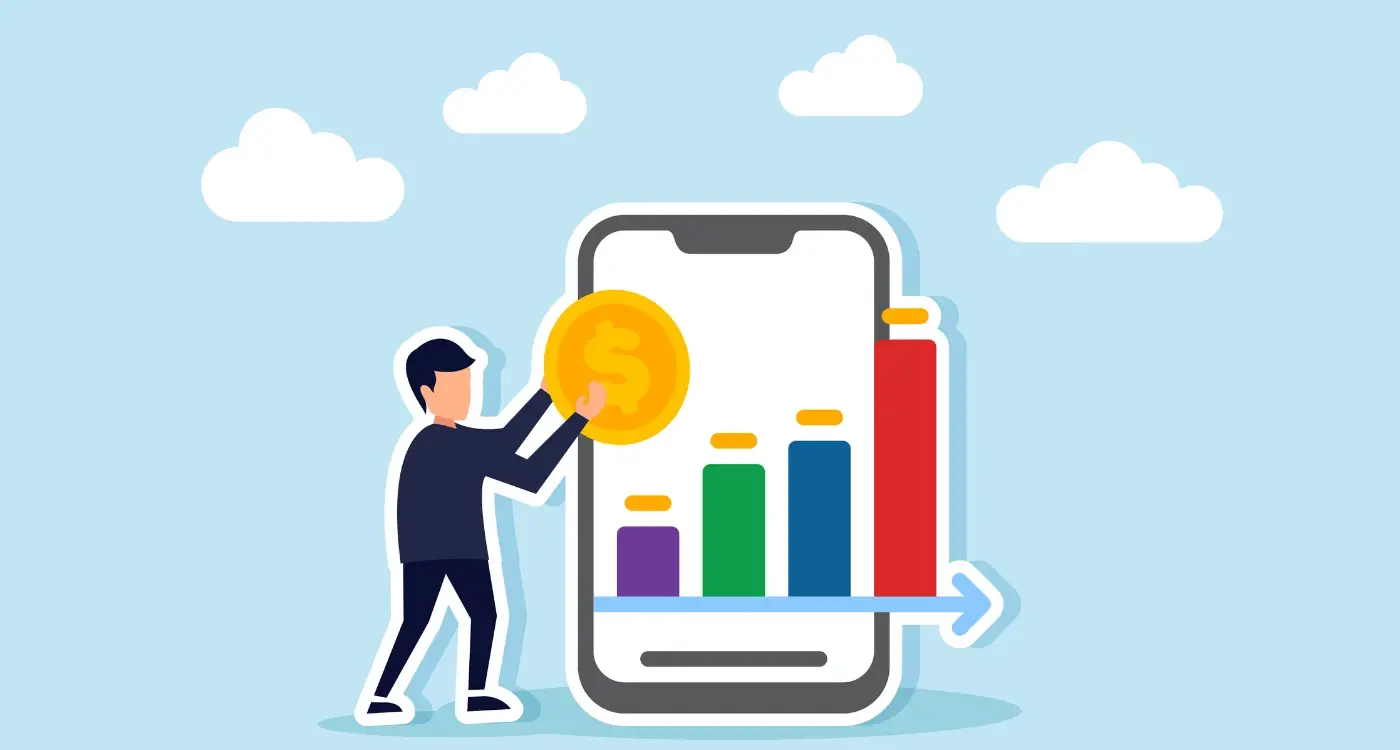How Do You Highlight Benefits Without Attacking Rivals?
Marketing your mobile app feels like walking a tightrope sometimes. You need to show why your app is better than the competition, but directly attacking rival apps often backfires—making you look petty or desperate. I've watched countless app developers struggle with this balance over the years, and honestly, it's one of the trickiest parts of app marketing.
The temptation to point out competitors' flaws is huge, especially when you genuinely believe your app solves problems that theirs doesn't. But here's what I've learned from working with hundreds of apps: users don't want to hear you slag off the competition. They want to know what makes your app worth their time and phone storage space.
The best marketing doesn't tear others down—it builds your own value so high that comparisons become irrelevant
Think about it from a user's perspective. When someone's scrolling through app store listings or reading your marketing copy, they're not looking for drama or negativity. They're looking for solutions. They want to understand how your app will make their life easier, more productive, or more enjoyable. That's where benefit positioning comes in—it's about showcasing your app's strengths without needing to mention anyone else's weaknesses.
This approach isn't just about being nice (though that matters too). It's actually more effective. When you focus purely on your benefits and unique value, you control the conversation. You're not giving competitors free publicity or accidentally highlighting features they might do well. Instead, you're building a compelling case for why users should choose you based on merit alone.
Throughout this guide, we'll explore practical strategies for highlighting what makes your app special while keeping the focus positive and user-centred. Because the best apps don't need to put others down—they just need to lift themselves up.
Why Benefits Beat Competitor Bashing
Look, I get it. When you've spent months building what you know is a brilliant app, its tempting to point out everything your competitors are doing wrong. I've had countless clients come to me wanting to create marketing that basically says "we're better than App X because they suck at Y." But here's the thing—this approach almost always backfires, and I've seen it happen more times than I care to count.
When you attack competitors directly, you're actually doing their marketing for them. You're putting their name in front of your potential users and making them aware of alternatives they might not have known existed. Bit counterproductive, isn't it? Plus, users don't really care about your rivalry with another app; they care about what you can do for them right now.
Focus on What You Do Well
The apps that succeed in the long run are the ones that focus relentlessly on their own strengths. Take Spotify—they don't spend time telling you why Apple Music is rubbish; they show you personalised playlists, highlight their podcast selection, and demonstrate how well they understand your music taste. That's proper positioning.
Your users want to know how your app will make their day better, save them time, or solve their problem. They want to see proof that it works. When I work with clients on their messaging, we spend our time crafting stories about real benefits and genuine value, not tearing down the competition.
Building Trust vs Creating Drama
Competitor bashing also makes you look petty and unprofessional. Users want to trust the apps they download, especially when they're handling personal data or payments. An app that spends its energy attacking others rather than explaining its own benefits raises red flags about maturity and focus.
Understanding Your Unique Value
Right, here's where things get interesting—and honestly, it's where most app developers completely mess up their messaging. I mean, I've seen brilliant apps with terrible positioning that makes you wonder what they actually do. The thing is, finding your unique value isn't about listing every feature you've built; it's about understanding what makes people's lives better in a way that nobody else does.
When I work with clients on this, I always start with the same question: what can your app do that would make someone switch from whatever they're using now? Not what features you have, but what outcome you deliver that matters to real people. Sure, your competitor might have push notifications too—but do they send personalised workout reminders based on your sleep patterns? That's the difference we're looking for.
What Makes You Different
Your unique value lives in the gaps between what users need and what's currently available. I've found that the best apps succeed because they solve problems in ways that feel obvious once you see them, but nobody thought of before. Maybe your budgeting app doesn't just track expenses—it predicts when you'll run out of money and suggests specific actions to avoid it.
The key is being specific about your benefits. "Better user experience" means nothing to anyone; "saves you 15 minutes every morning by learning your coffee preferences" is something people can actually picture in their lives.
Write down three things your app does that directly improve someone's day, then ask yourself: can your main competitors say exactly the same thing? If yes, dig deeper until you find what's genuinely yours.
Finding Your App's Best Features
Right, so you've got your app built and you think it's brilliant—but here's the thing, every feature you've packed in there isn't necessarily worth shouting about. I mean, just because you can do something doesn't mean it's what makes people fall in love with your app.
The trick is figuring out which features actually matter to your users. And honestly? It's usually not the ones you think. I've seen apps with dozens of features where users only care about three or four of them. Those are your golden features—the ones that make people's lives easier, faster, or more enjoyable.
Start With What Users Actually Do
Look at your analytics (if you haven't got them set up yet, do it now). Which features get used most? Where do people spend their time? But more importantly—where do they get stuck or drop off? Sometimes the features that cause friction are just as telling as the popular ones.
Here's what I always tell my clients to focus on:
- Features that save time or money
- Things that solve real problems (not made-up ones)
- Functions that work better than alternatives
- Capabilities that feel almost magical to users
- Tools that help users achieve their goals faster
Don't get caught up in technical specifications either. Users don't care if your app uses machine learning or has a fancy algorithm running in the background. They care about what it does for them. Your messaging should focus on outcomes, not the clever tech that makes it happen.
The best features often aren't the flashiest ones—they're the ones that quietly make everything work better. Find those, and you've found your marketing gold.
Writing Messages That Connect
Here's where most app developers get it wrong—they focus on features instead of feelings. I mean, your users don't really care that your app has "advanced AI algorithms" or "machine learning capabilities." They care about what those things actually do for them. Will it save them time? Make them feel more organised? Help them connect with friends?
When I'm writing messaging for apps, I always start with the user's problem first. What are they struggling with right now? What keeps them frustrated? Then I show how the app solves that specific issue. It's not about being clever with words; it's about being clear about the benefit. For example, instead of saying "Our app features real-time synchronisation across devices," try "Never lose your work again—everything saves automatically on all your devices."
The best app messages don't sell features, they sell better versions of your users' lives
One thing I've noticed is that emotional language works much better than technical jargon. Words like "finally," "instantly," and "effortlessly" connect with how people actually feel when they use your app. But here's the key—you've got to back up those emotional promises with real functionality. Don't say "effortlessly" if your app takes five steps to do something simple.
And honestly? Keep it simple. I see so many app descriptions that read like technical manuals. Your messaging should pass the "would my mum understand this?" test. If she wouldn't get it immediately, neither will most of your potential users. Focus on one main benefit per message, use everyday language, and always answer the question: "What's in it for me?"
Using Social Proof and Reviews
Social proof is honestly one of the most powerful tools you can use when promoting your app. I mean, people trust other people way more than they trust marketing messages—and for good reason. When someone sees that thousands of others have downloaded your app and loved it, that's way more convincing than any fancy copy you could write.
The trick is knowing which reviews to highlight and how to present them properly. You don't want to cherry-pick obviously fake 5-star reviews that sound like marketing speak. Instead, look for genuine feedback that mentions specific benefits your app delivered. A review saying "This app saved me 30 minutes every morning" is gold because it's specific and relatable.
Making Reviews Work Harder
But here's the thing—you can't just slap a few star ratings on your website and call it done. The best social proof tells a story about transformation or problem-solving. When showcasing testimonials, include context about who the person is and what challenge they faced before using your app.
User-generated content works brilliantly too. Screenshots of your app in action, posted by real users on social media? That's pure marketing magic right there. It shows your app being used in real situations by real people, which builds trust naturally.
Don't forget about showcasing download numbers, active users, or other impressive metrics—but only if they're genuinely impressive. "Downloaded by over 100,000 users" sounds great, but "Downloaded 47 times" doesn't help anyone. Sometimes it's better to focus on qualitative feedback rather than numbers that aren't quite there yet. The goal is building confidence in your app's value, not just showing off statistics.
Showing Results Without Comparisons
The most powerful way to show your app's value is to let results speak for themselves. I mean, numbers don't lie, right? When you focus on what your app actually delivers rather than how it compares to others, you create much stronger messaging that users can relate to.
Data-driven benefits work because they're concrete. Instead of saying "better than our competitors," show specific outcomes like "users save 15 minutes daily" or "95% of customers complete their goals within the first week." These metrics tell a story that potential users can immediately understand and apply to their own situation.
Types of Results That Actually Matter
Not all metrics are created equal—some resonate much more with users than others. Here's what I've found works best when showcasing app benefits:
- Time savings (minutes or hours saved per day/week)
- User satisfaction rates and retention percentages
- Specific outcomes achieved (tasks completed, goals reached)
- Usage frequency (how often people actually use features)
- Problem-solving speed (how quickly issues get resolved)
The key is making these numbers relatable. If your app helps people track expenses, don't just say "thousands of transactions processed." Say something like "users typically save £200 monthly by tracking spending patterns." That's something people can actually picture in their own lives.
Case studies work brilliantly for this too. Real user stories with specific outcomes create trust without needing to mention competitors at all. When someone reads about another person solving the exact problem they're facing, that's incredibly persuasive on its own.
Always include a timeframe with your results. "Users see improvements" is weak, but "users see improvements within 3 days" gives people clear expectations and builds confidence in your app's effectiveness.
Testing Your Marketing Messages
Right, so you've crafted some brilliant marketing messages that highlight your app's benefits without taking cheap shots at the competition. But here's the thing—how do you know if they actually work? I mean, what sounds good in your head might fall completely flat with real users. And that's where testing comes in.
The beauty of digital marketing is that you can test pretty much everything these days. Your app store description, your social media posts, even your website copy—all of it can be tested and optimised. I always tell clients to think of their first attempt at messaging as a starting point, not the final destination.
A/B Testing Your Messages
A/B testing is your best friend here. Create two versions of your message and show them to different groups of people. Maybe one version focuses on time-saving benefits whilst the other highlights cost savings. Run them both and see which one gets more engagement, downloads, or whatever metric matters most to your business.
You can test different elements like headlines, descriptions, or even the order you present your benefits. Sometimes moving your strongest benefit to the front of your message can make a huge difference. Other times, leading with an emotional hook works better than jumping straight into features.
Quick Testing Methods
Here are some practical ways to test your messages:
- Social media posts with different angles
- Email subject lines to your existing users
- Google Ads with various headlines
- App store screenshots with different benefit callouts
- Landing page variations for your website
The key is to test one element at a time. If you change everything at once, you won't know what actually made the difference. Start small, measure the results, and keep refining your approach based on real user feedback rather than guesswork.
Conclusion
Right, let's wrap this up properly. After years of watching apps succeed and fail in the marketplace, I can tell you that the ones that focus on their own strengths rather than tearing down competitors almost always come out ahead. It's not just about being nice—it's about being smart with your marketing budget and building genuine trust with users.
The approach we've covered here isn't rocket science, but it does require discipline. When you see a competitor doing something that winds you up, your first instinct might be to call them out publicly. Don't. Instead, channel that energy into making your own app better and communicating its benefits more clearly.
Here's what I want you to remember: users don't care about your competitor drama. They care about solving their problems. When you focus your messaging on the specific benefits your app delivers—faster checkout, better battery life, simpler navigation—you're speaking their language. You're showing them exactly why they should choose you without making them feel like they need to pick sides in some playground fight.
The mobile app market is only getting more competitive, and that's actually good news for apps that nail their benefit positioning. While your competitors are busy pointing fingers and making negative comparisons, you'll be building relationships with users based on what you can do for them. That's the kind of foundation that leads to long-term success, not just quick downloads that don't stick around.
Focus on your strengths, measure what works, and keep refining your message. Your users will thank you for it.
Share this
Subscribe To Our Learning Centre
You May Also Like
These Related Guides

How Should Startups Position Against Established App Brands?

What Positioning Mistakes Kill New Apps Before They Launch?



